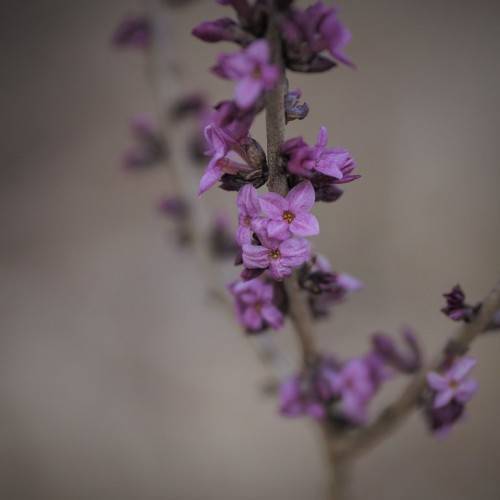
mezereon
Daphne mezereum
Cycle:
Perennial
Watering:
Average
Hardiness Zone:
4 - 7
Flowers:
Flowers
Sun:
Full sun,part shade
Fruits:
Fruits Ready In Fall
Leaf:
Yes
Growth Rate:
Low
Maintenance:
Moderate
Poisonous To Humans:
Yes
Poisonous To Pets:
Yes
Thorny:
Yes
Care Level:
Medium
watering
Mezereon is a shrub species that prefers moist, well-drained soils. They should be watered regularly to keep the soil consistently moist, but not saturated. During the growing season, water plants deeply once a week or every other week, depending on the soil and weather conditions. In the summer months, check the soil regularly to ensure it is not drying out completely between watering. Water new transplants more frequently until they are established. During winter months, this shrub will require less water, once every 3-4 weeks is sufficient. Be sure to avoid puddling and standing water around the root zone.
sunlight
Mezereon is a bush that grows best when exposed to full sunlight for at least 4 to 6 hours a day. Depending on where you live, the amount of sun exposure for this plant may be slightly different. During summer, it should be exposed to the most amount of Suns rays making sure it is located in an area with the highest amount of direct sunlight as possible. During winter, the amount of sunlight exposure needs to be decreased to about 3 to 4 hours a day, as the cold temperatures can give the plant some damage. It is best to locate Mezereon away from any gust of wind to help protect it from any damage.
pruning
Mezereon (Daphne mezereum) can be pruned lightly in late winter or early spring after any danger of frost has passed, or late summer, after flowering has finished. When pruning, remove any dead or damaged stems and any diseased or badly positioned branches. Thin out any congested growth, and remove any lower growth to encourage new shoots and make the shrub more open. If the plant has become too tall or too wide for its space, it can be cut back hard in winter or early spring, but try to retain some of the old wood, as it will often produce the best flowers.
